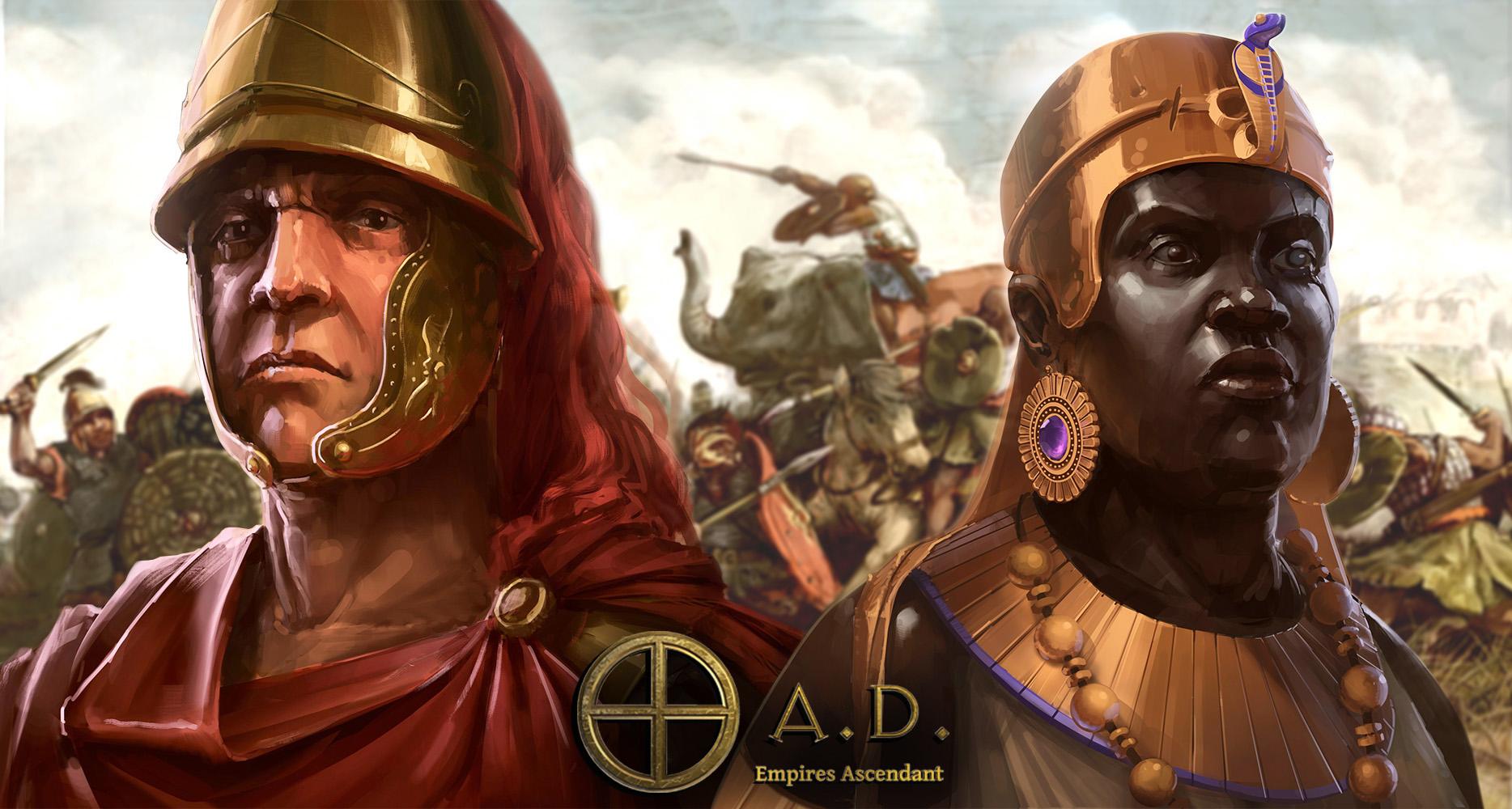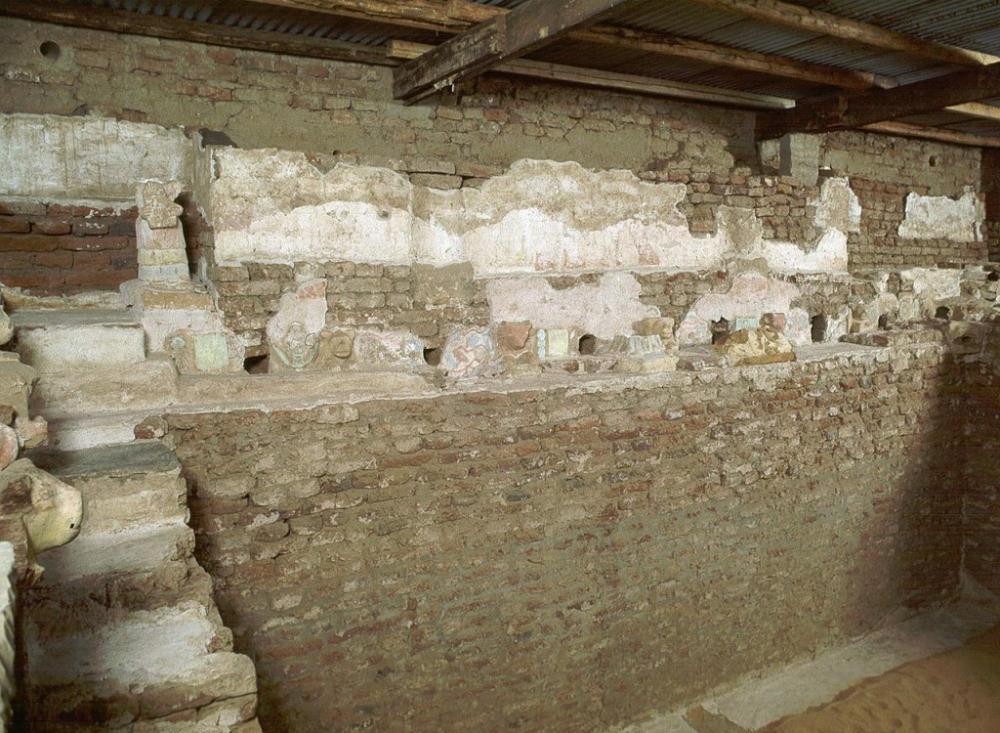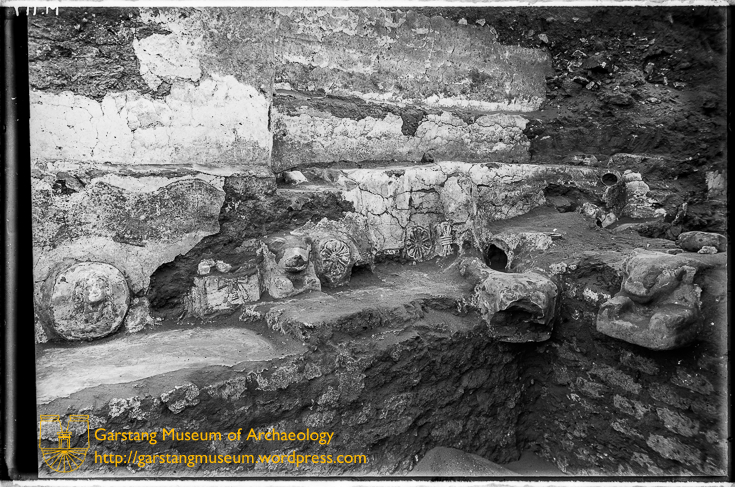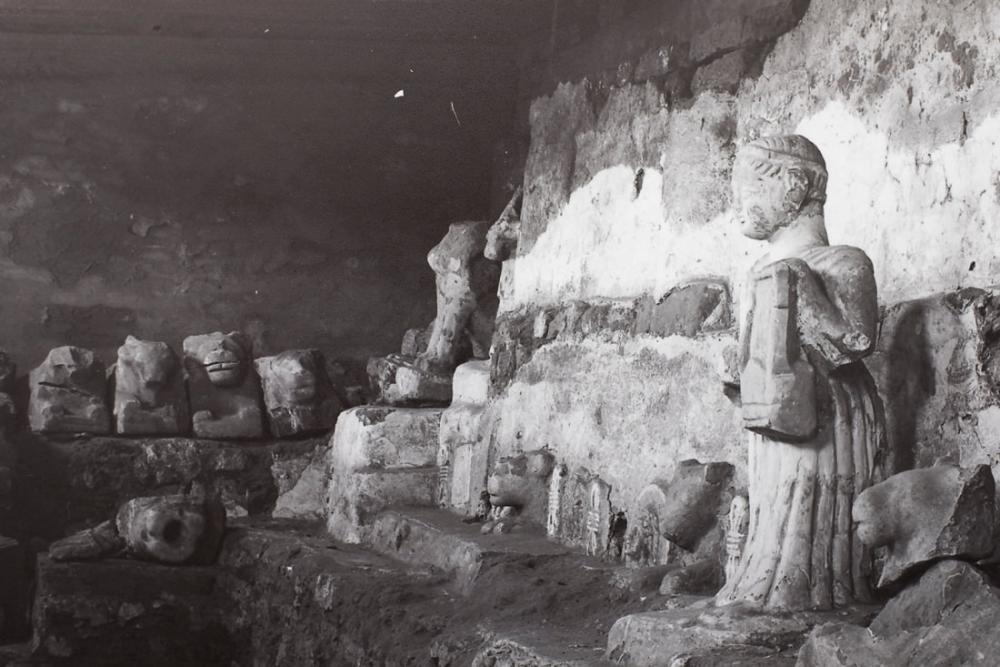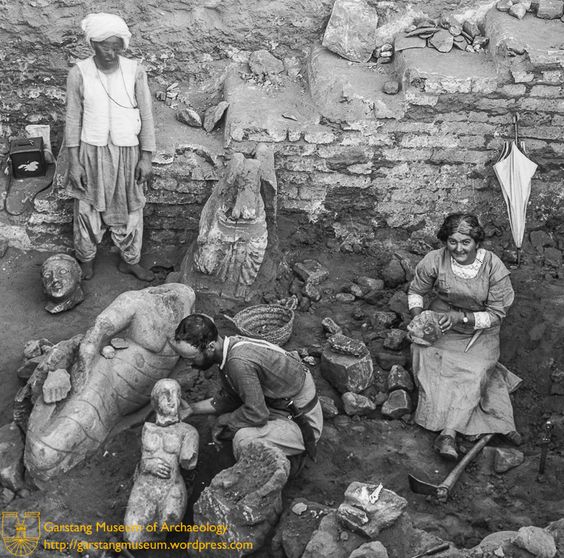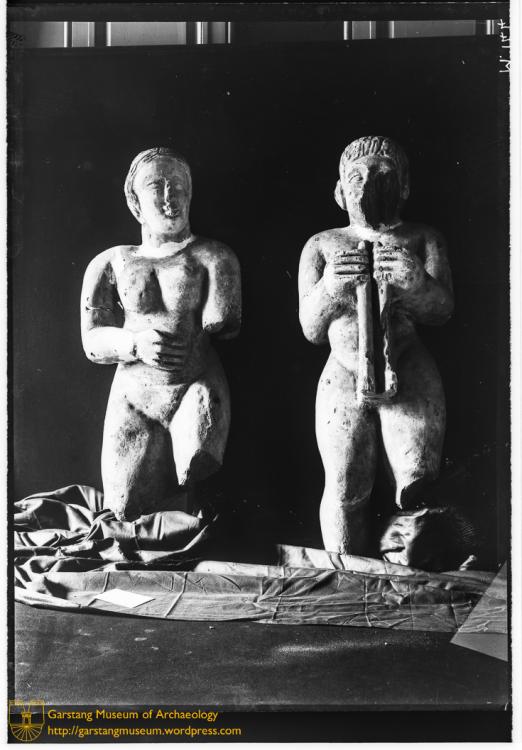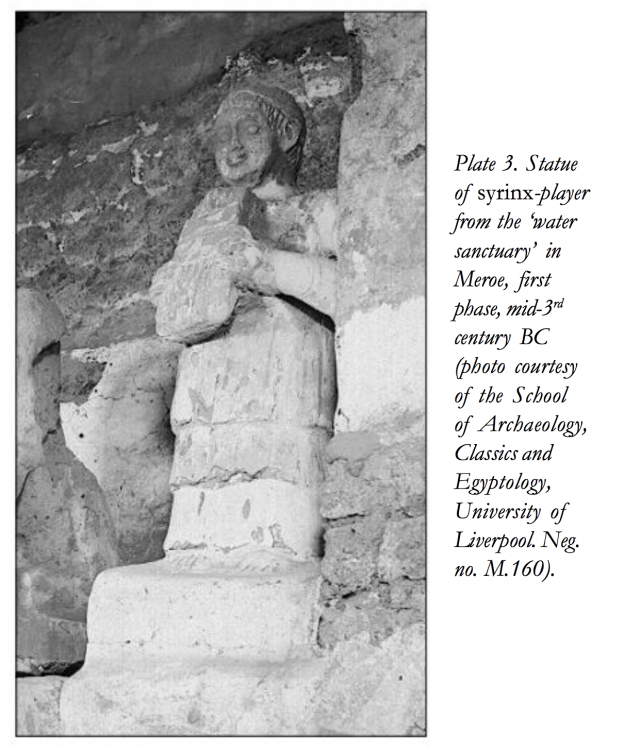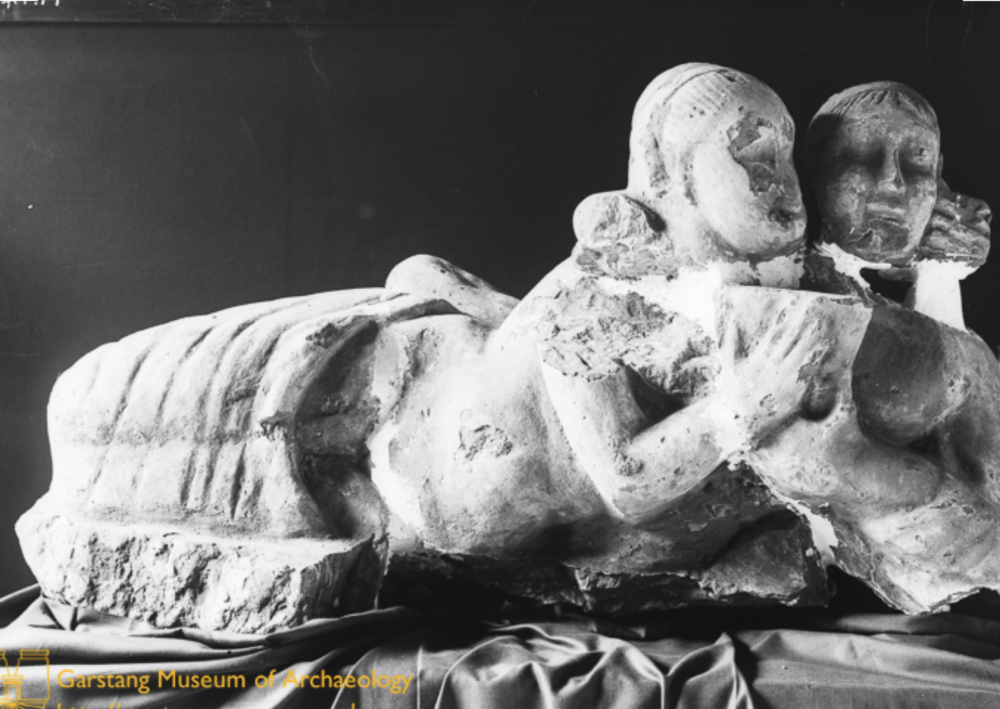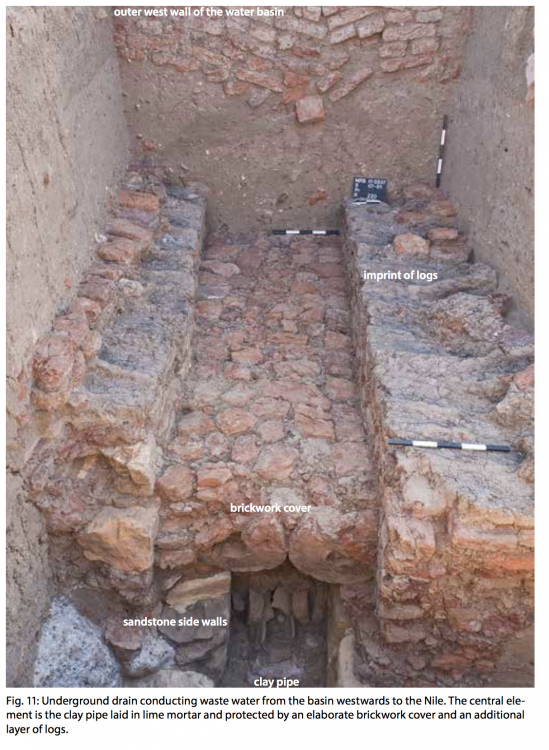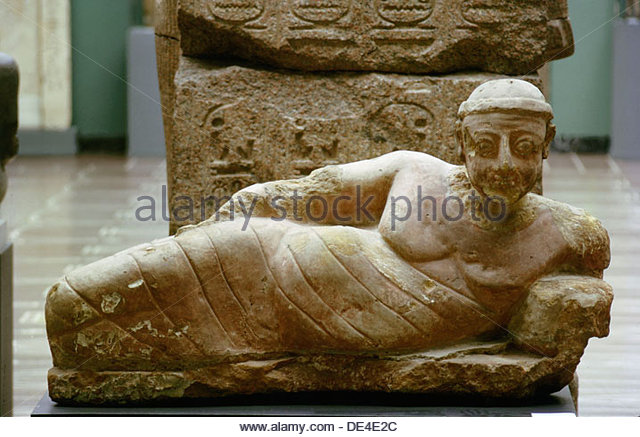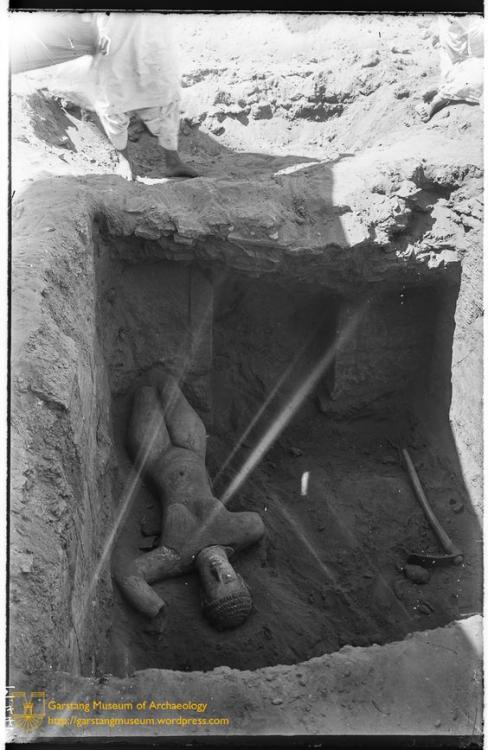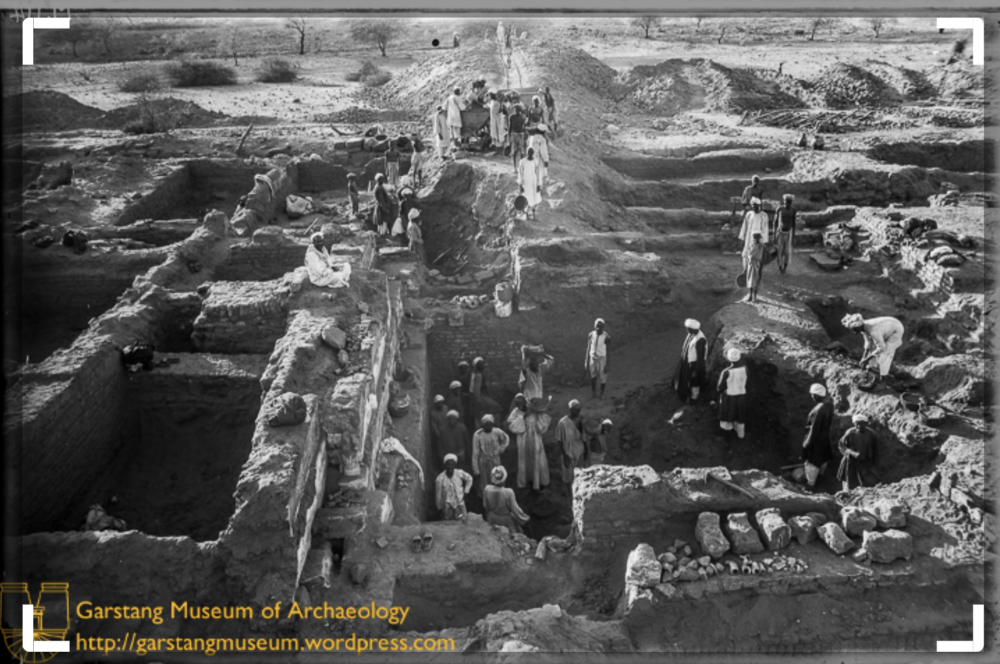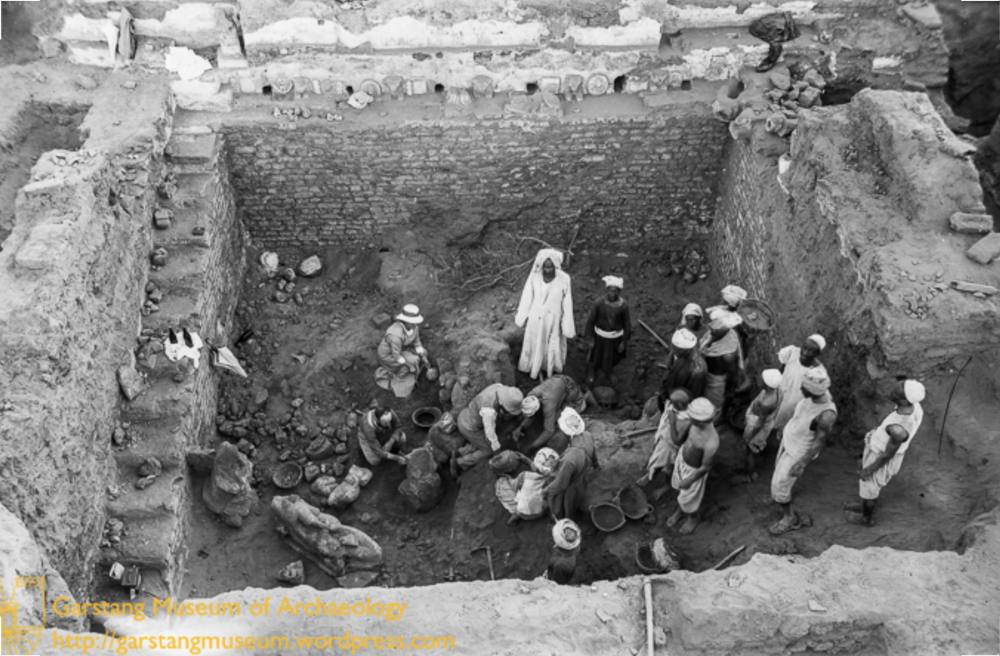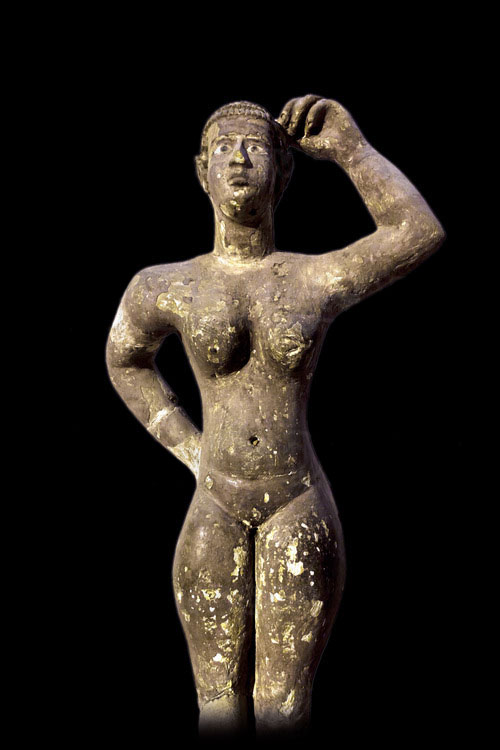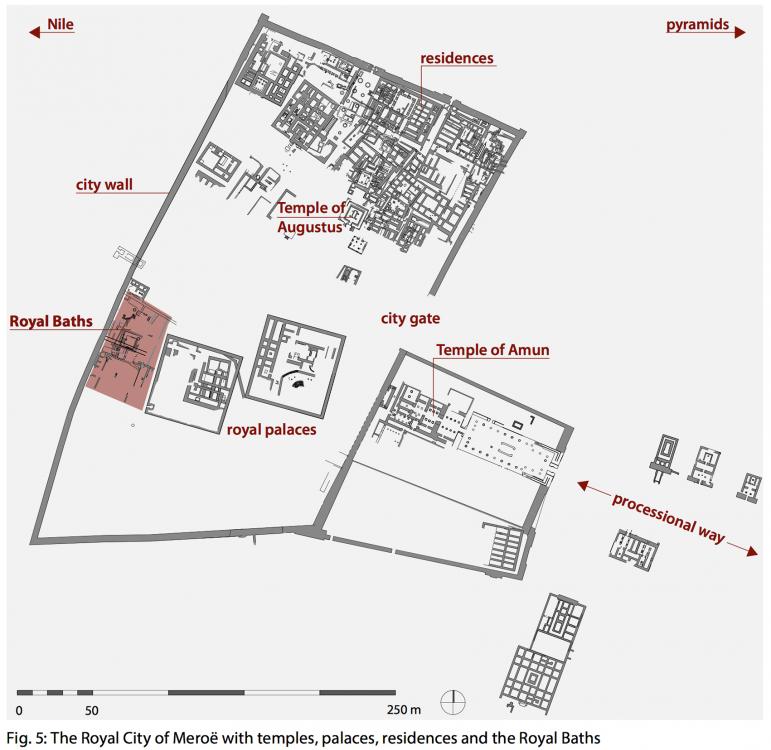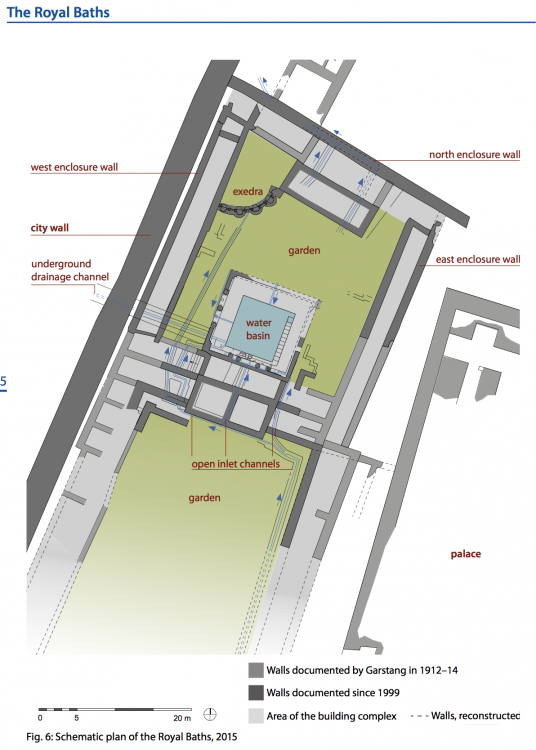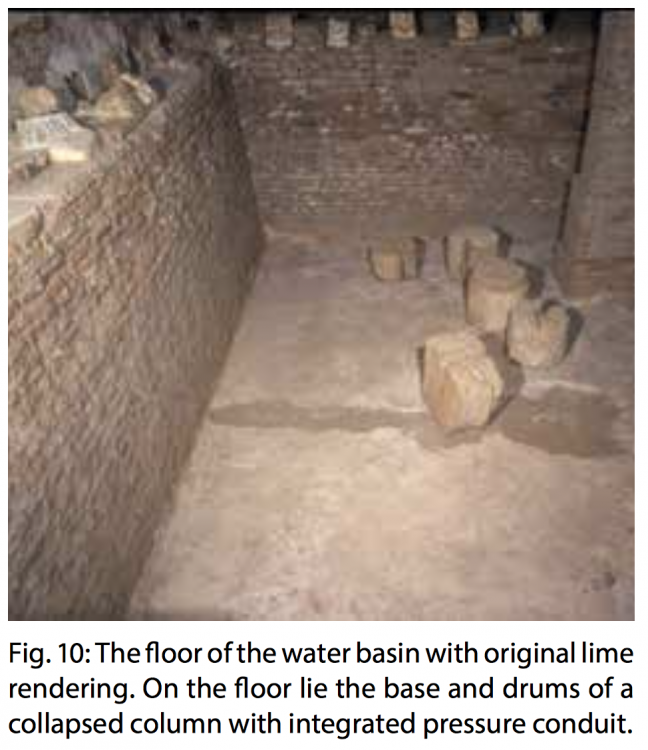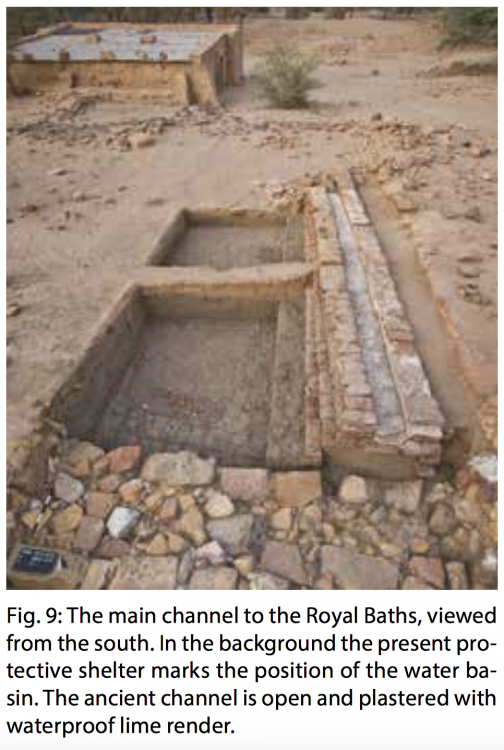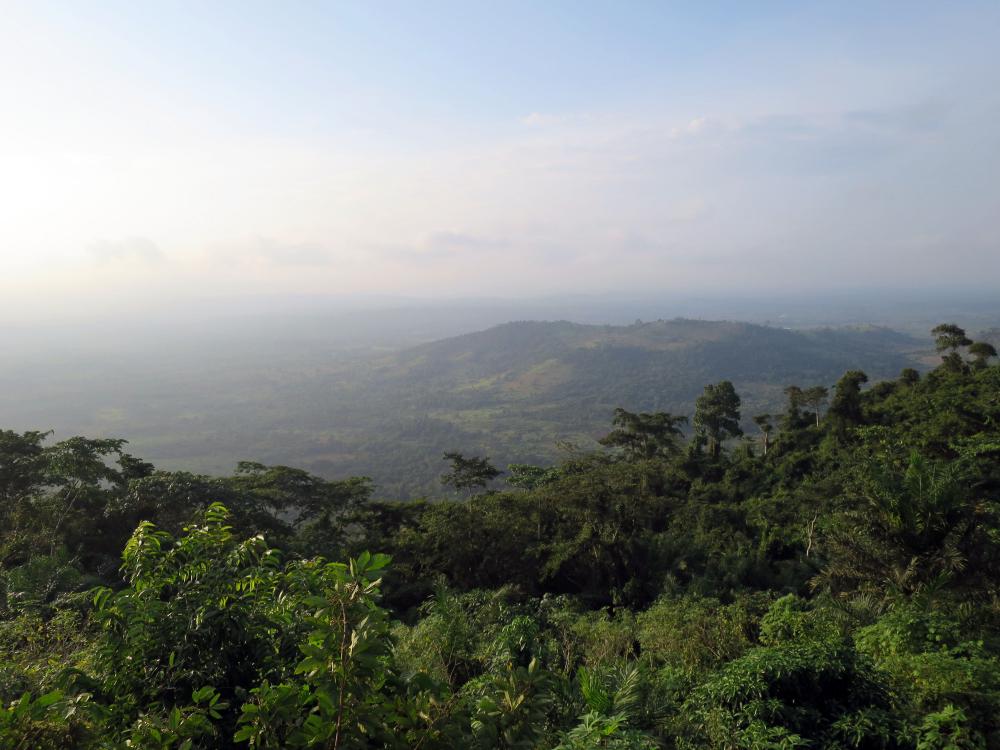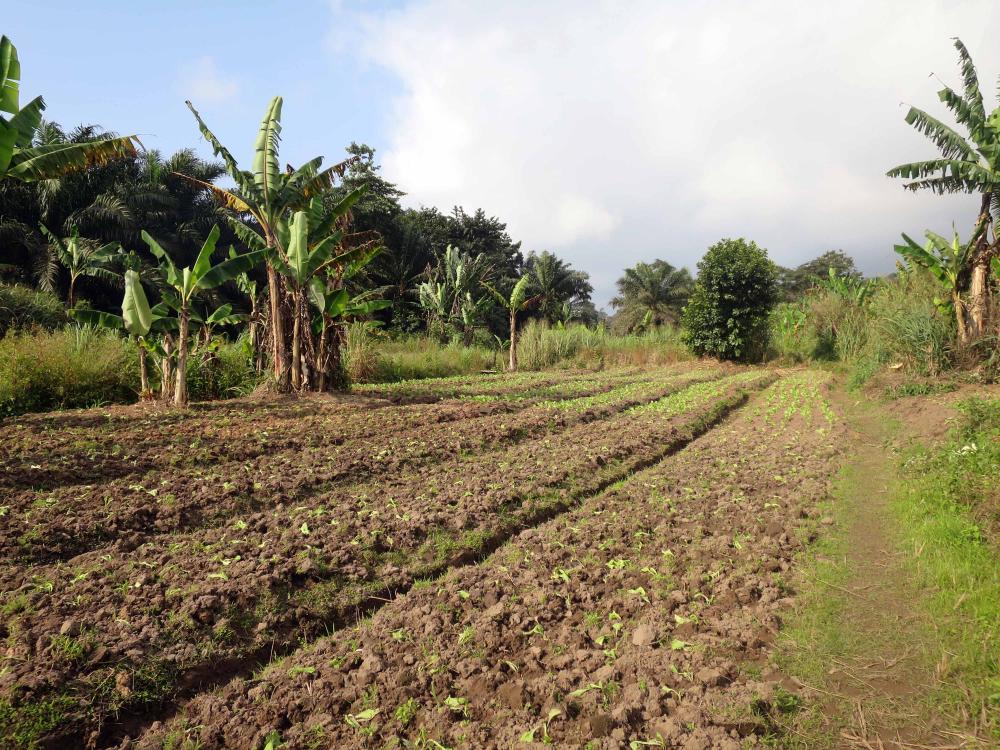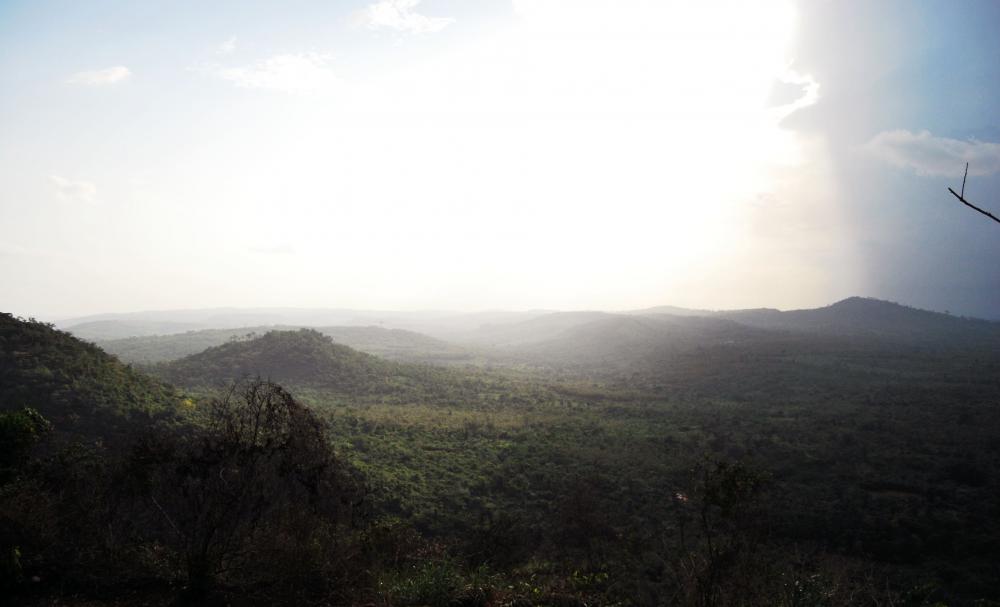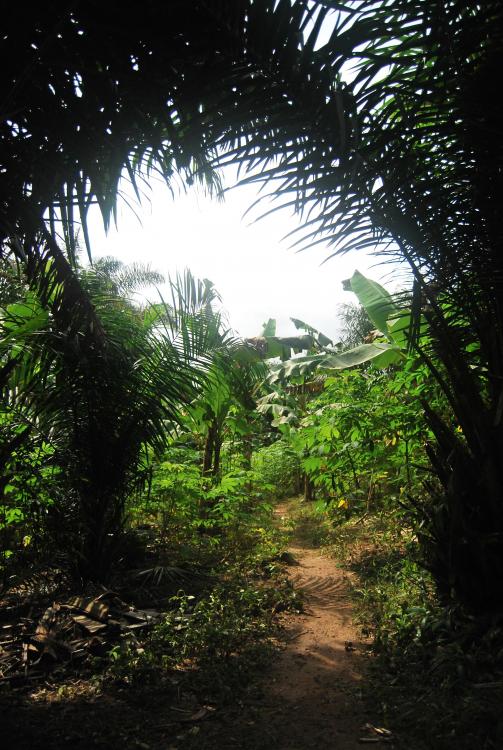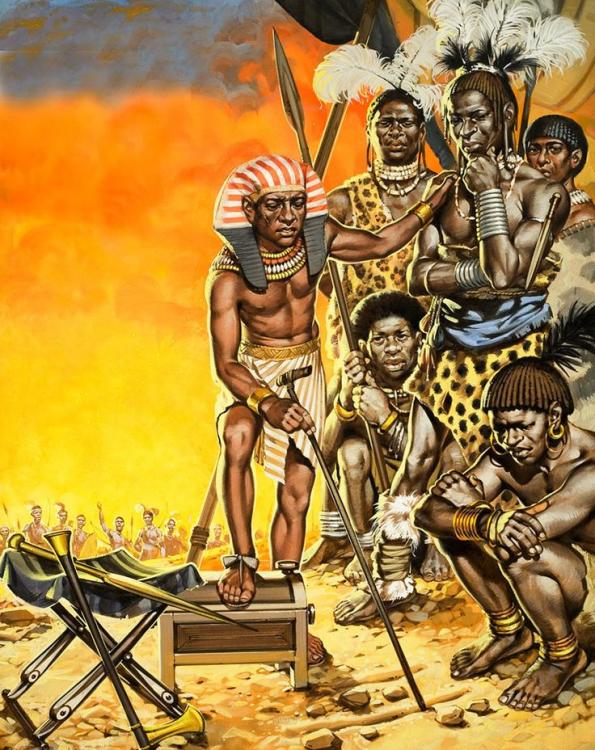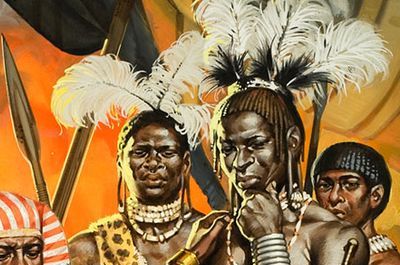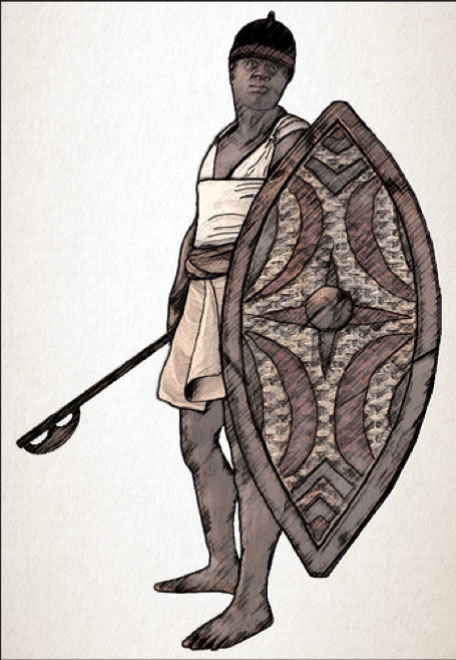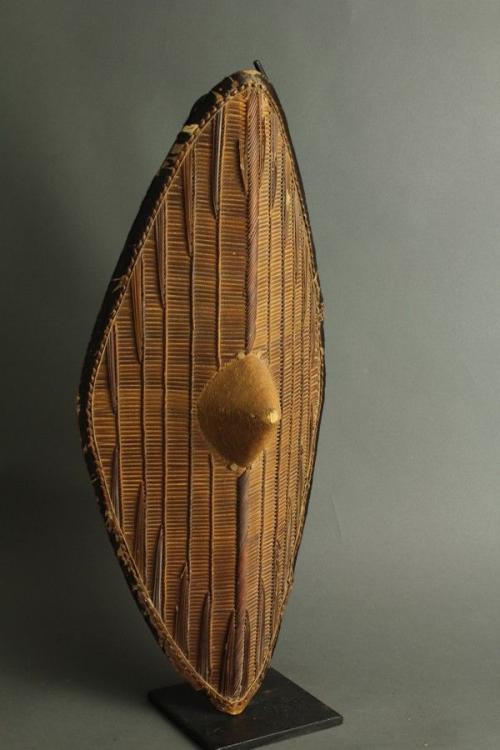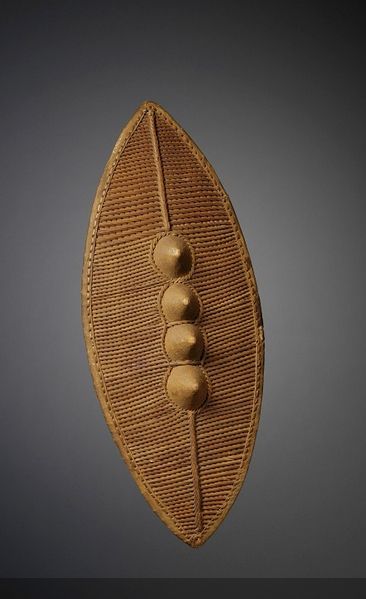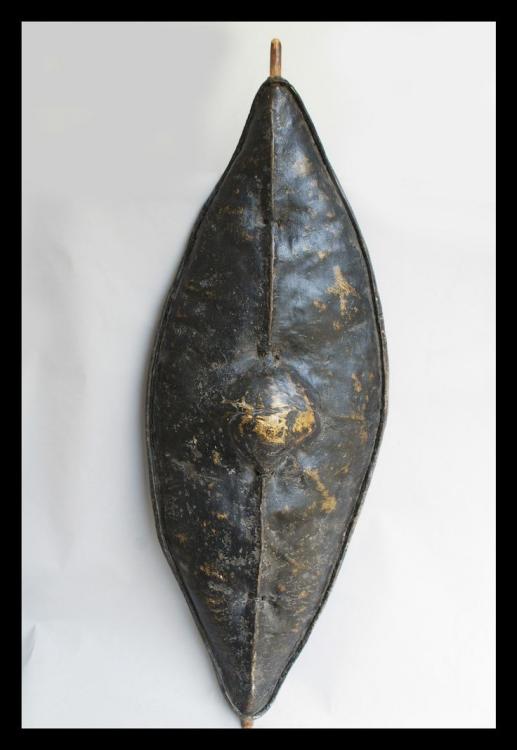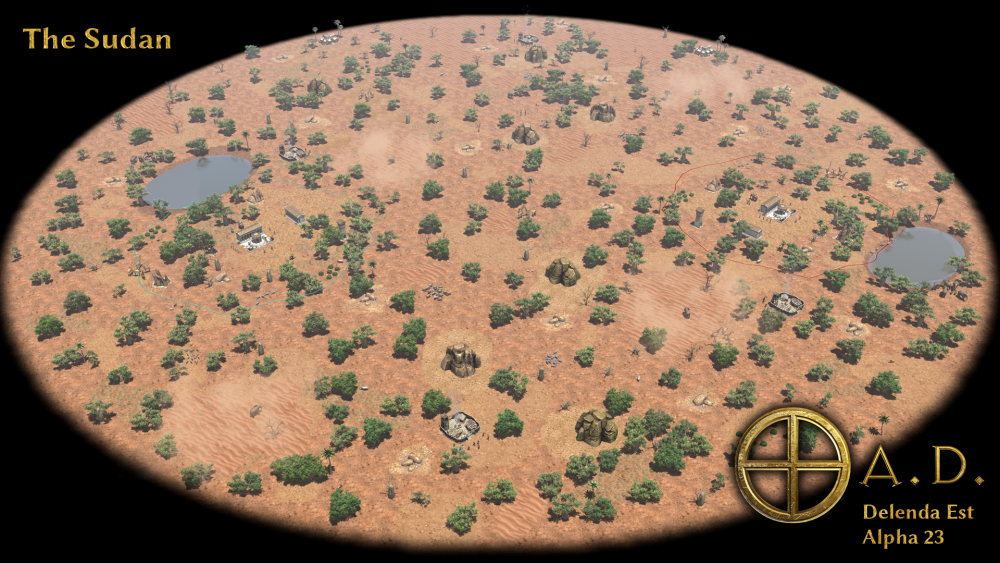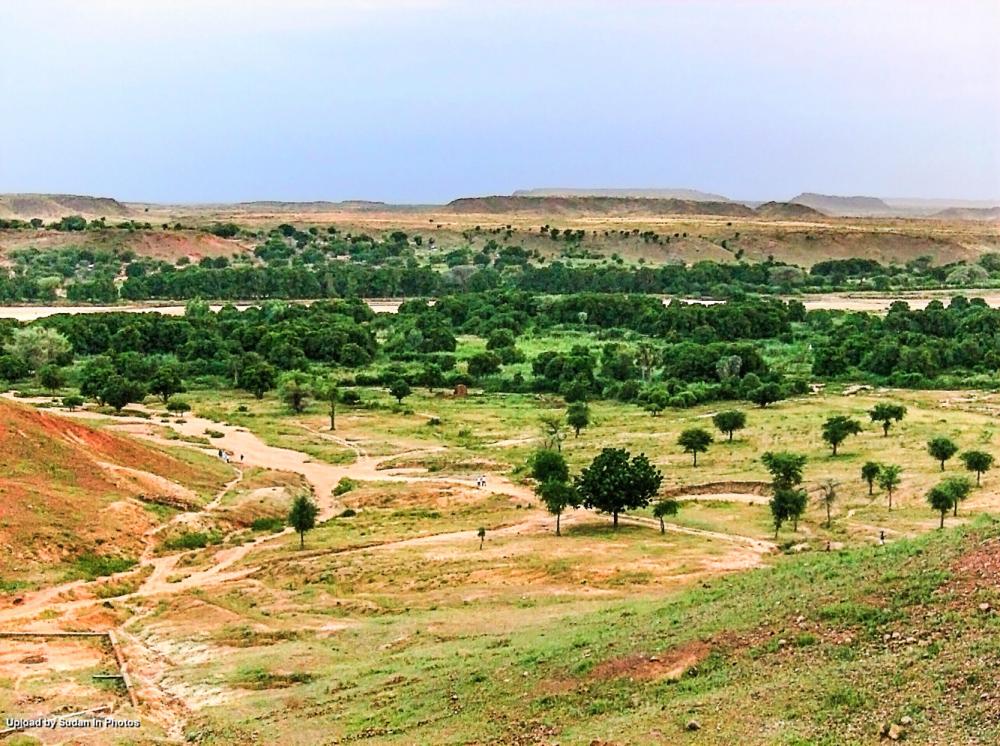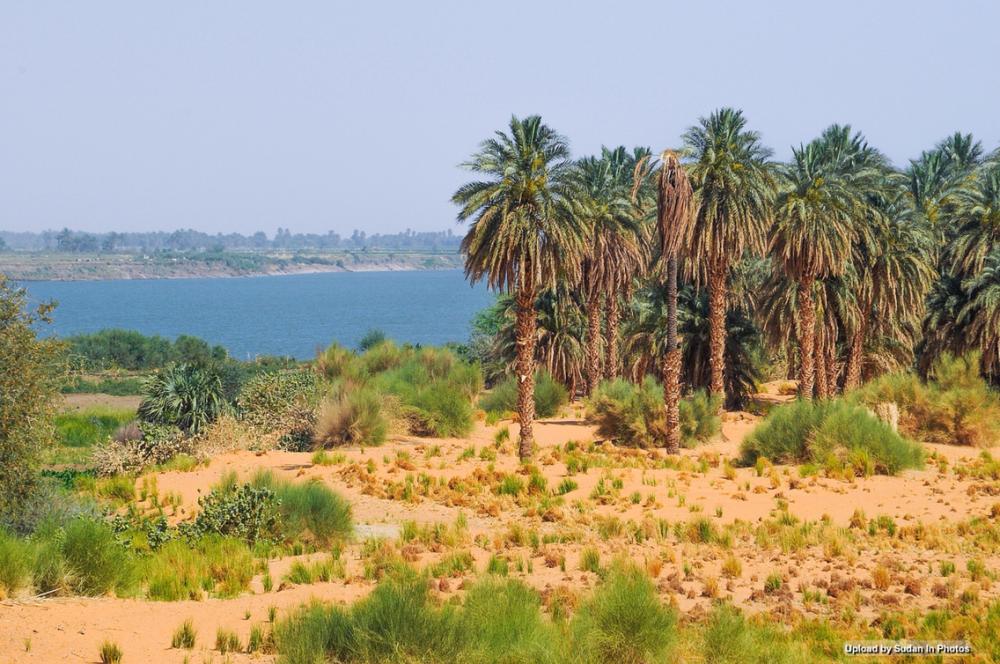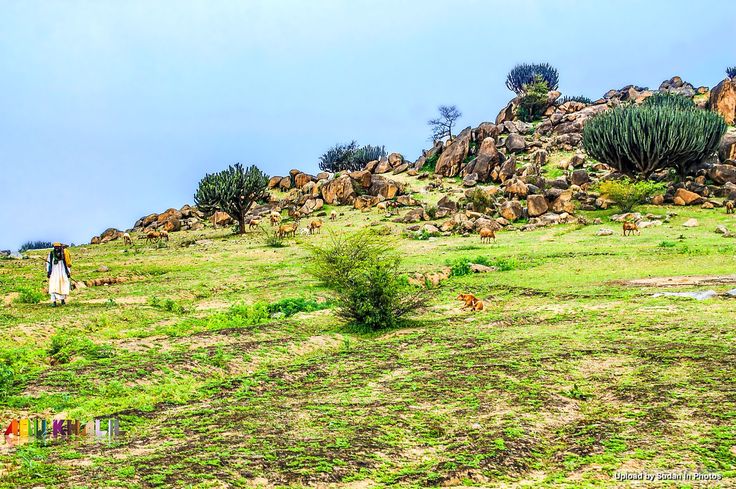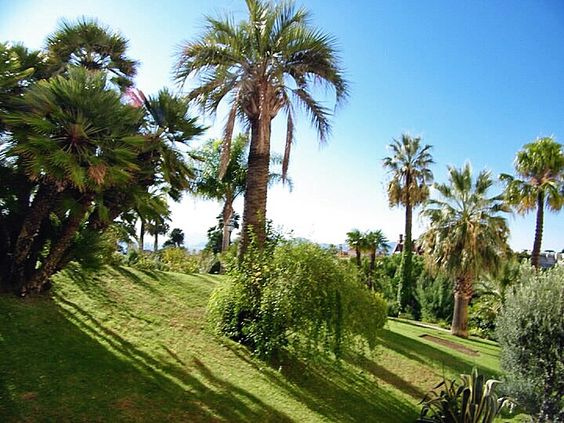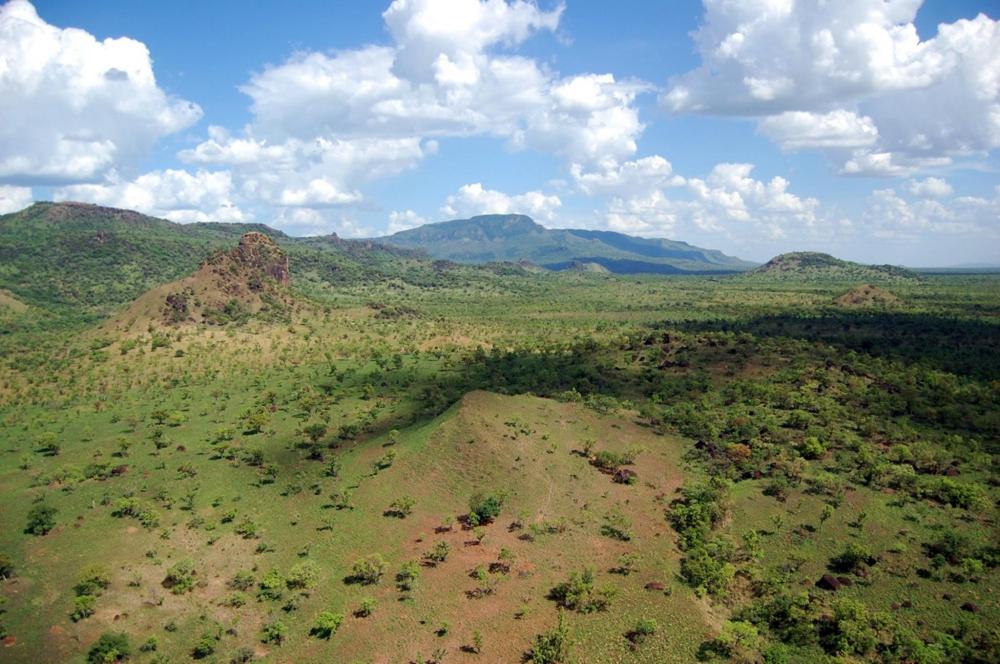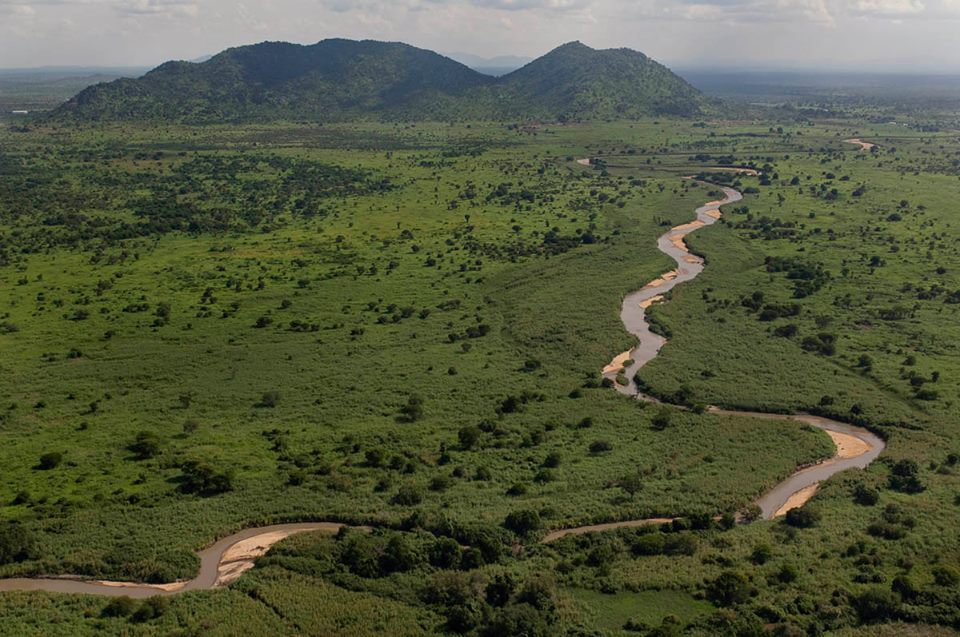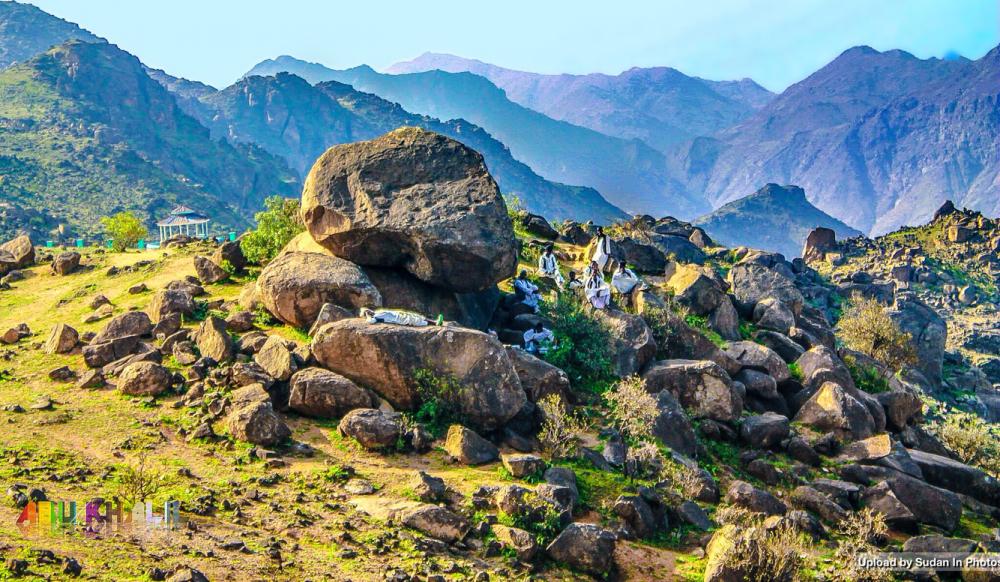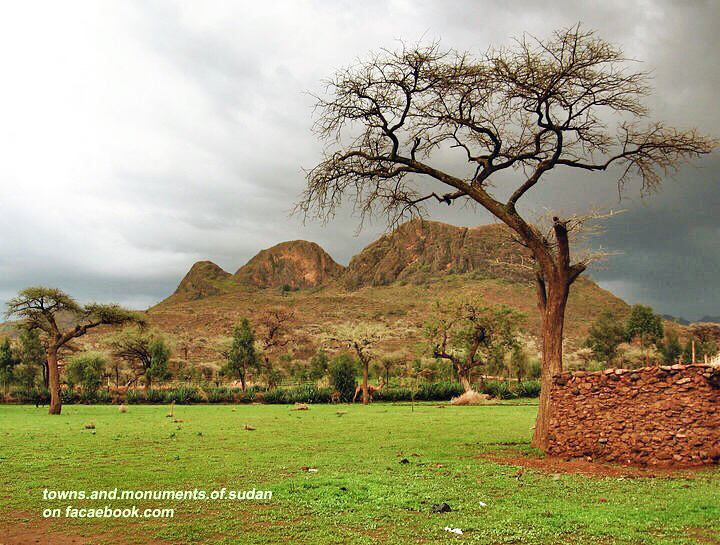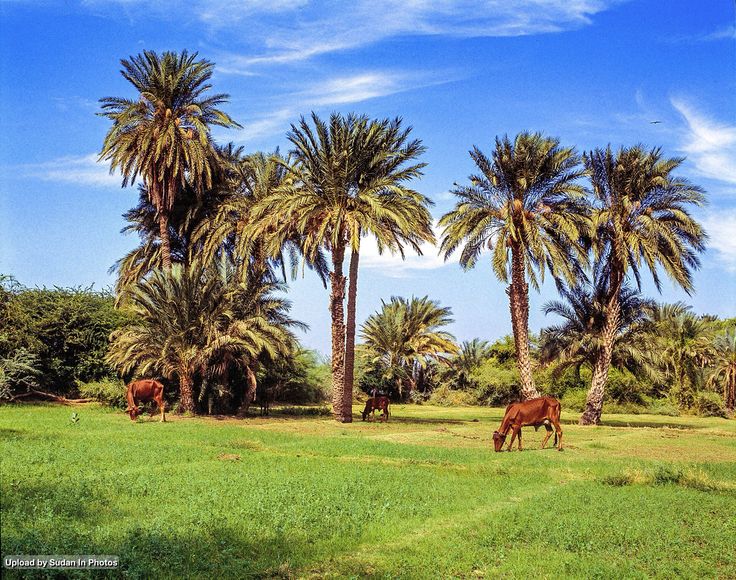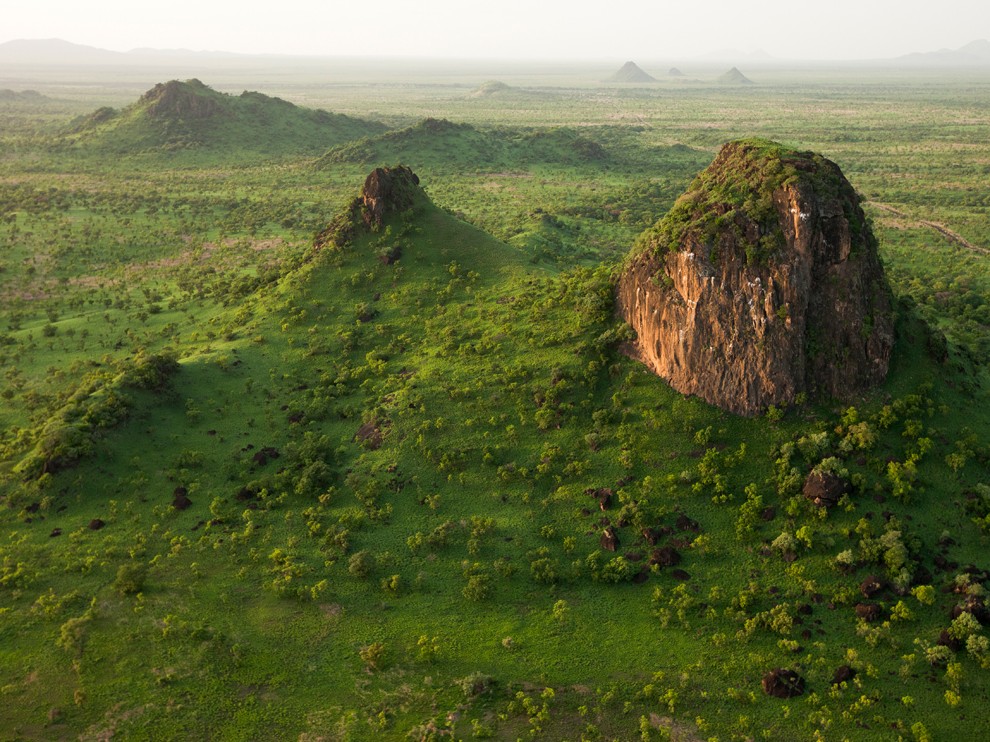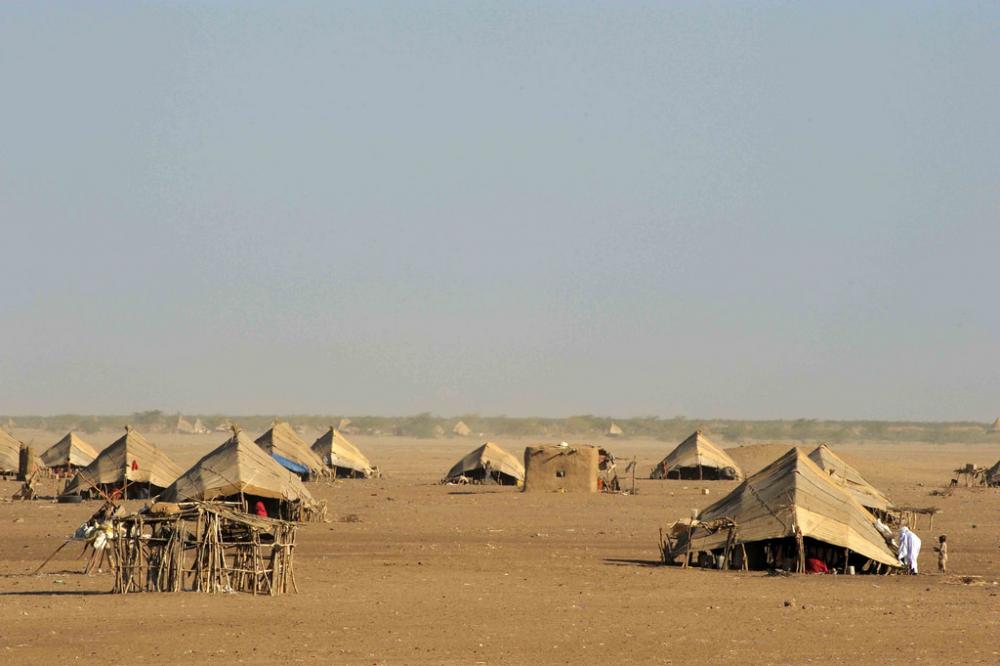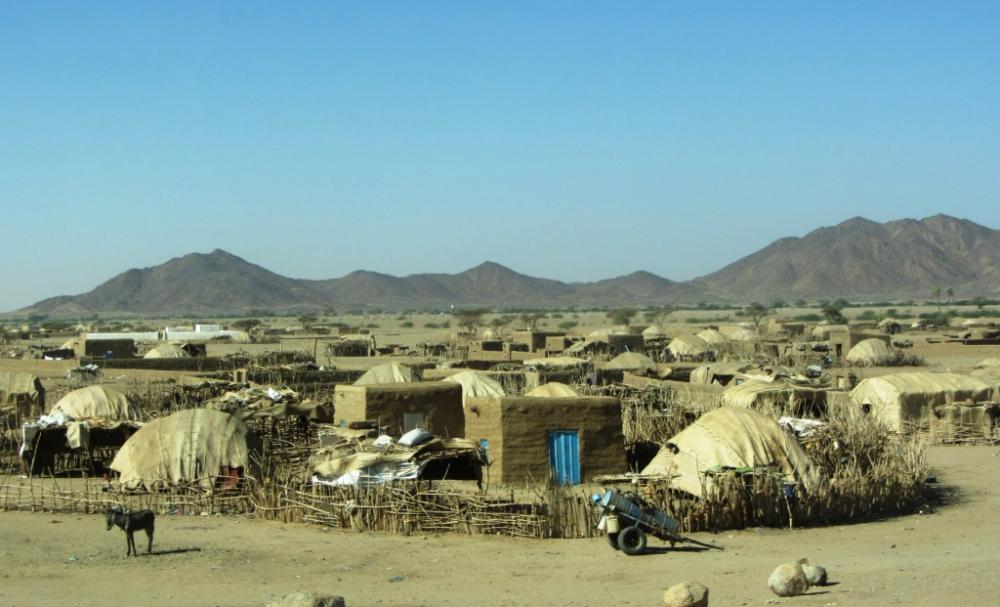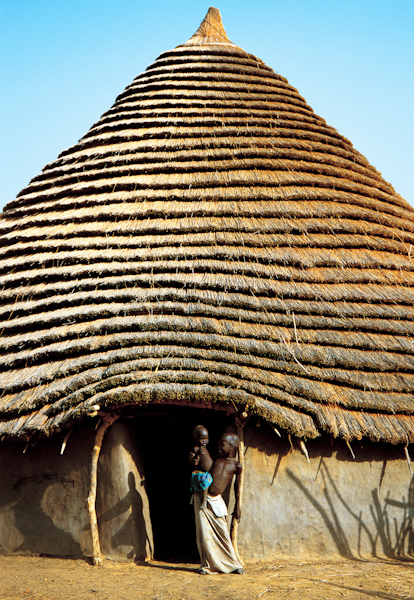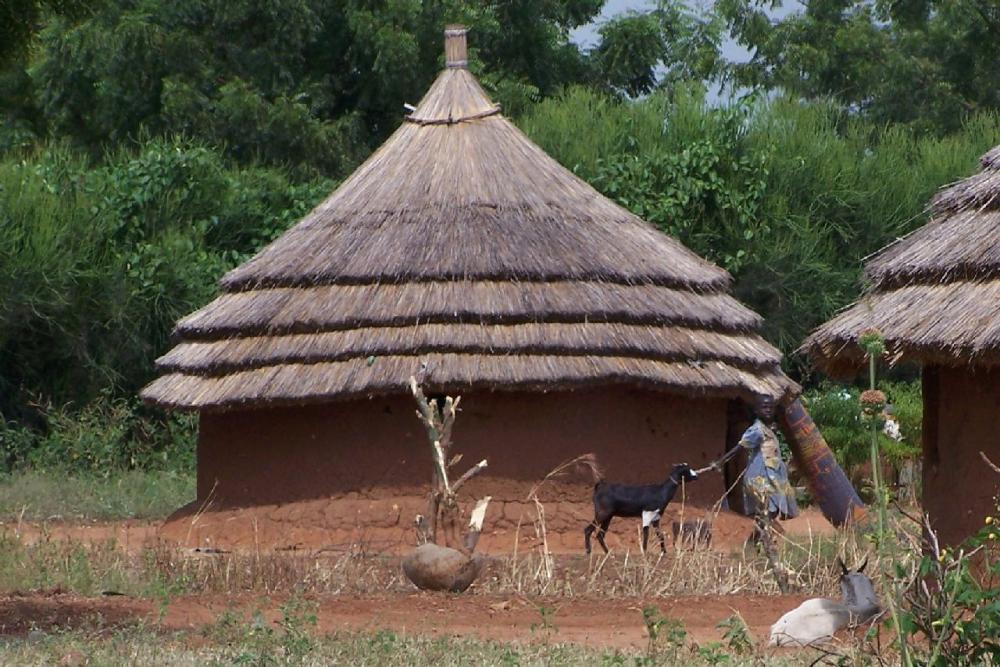-
Posts
2.332 -
Joined
-
Last visited
-
Days Won
60
Everything posted by Sundiata
-

The Kingdom of Kush: A proper introduction [Illustrated]
Sundiata replied to Sundiata's topic in Official tasks
The Kingdom of Kush: The Royal Baths of Meroe Between 1909 and 1914, John Garstang of the University of Liverpool conducted some of the earliest large scale excavations at Meroe. Among the many structures that were excavated, were the so-called Royal Baths, in the Royal City. I will quote several passages from a very informative PDF on the subject: In Meroë, the capital of the Kingdom of Kush in the middle Nile valley, an extraordinary hydraulic facility was built directly next to the royal palaces: the so-called Royal Baths. Dating from around the turn of the first millennium, the complex of buildings is an outstanding example of cultural transfer between the African kingdom and the Hellenistic-Roman cultures of the Mediterranean. The central feature of the complex is a large basin with an elaborately decorated wall. The water entered the basin through several pipe openings in this wall, cascading down against a backdrop of sculpted figures, green-blue shimmering faience and colourful wall paintings. ... The architectural design of the Royal Baths (Fig. 6) has no known parallel in the Kingdom of Kush. The centrepiece of the 30 m x 50 m complex is the virtually square water basin with an area of 7 m x 7 m and a depth of 2.4 m (Fig. 1). Shallow steps lead down into the basin (Fig. 7). It was surrounded on three sides by an ambulatory flanked by columns. On the fourth, south-facing side is the water inlet system concealed by a tall decorated wall. A few metres to the north of it an exedra was built with four ceremonial chairs arranged in a quarter-circle (Fig. 8). The basin and the exedra, the principal elements of the complex, were surrounded by a garden. There is evidence that this levelled area was flooded with fertile river mud and that plant pits were dug regularly around the basin. The garden was enclosed by corridors and adjoining rooms. Water was conducted to the basin from the south via open channels. Narrow, surface channels also ran through the garden to the exedra and to the edges of the basin. The point of origin and hence the source of the water for the supply system is still unclear. It can be assumed, however, that a device existed to lift water to the necessary height above the groundwater table or the level of the Nile. The principal supply of water to the basin was ensured, from the south, by a burnt-brick construction with an open water channel (Fig. 9). The channel is plastered with waterproof lime render which was reapplied twice during the working life of the Royal Baths. This principal inlet channel, on reaching the basin, splits into several branches whose water is conducted via covered pipes through the richly decorated show-wall to the rim of the basin (Fig. 12). From there the water gushed, possibly through spouts, into the basin, which was likewise completely plastered with water- proof lime render. As a special attraction a column may be imagined in the centre of the basin (Fig. 10). Water was drawn up through an integrated pressure pipe in the column drums and owed from the top back down into the basin. The basin was drained by means of a massive underground channel that conducted the water westwards to the Nile (Fig. 6 and 11). In an impressive feat of engineering, the drain was laid at a depth of about three metres and passed under the foundations of the centuries-old city wall, which was approx. 5 m thick. On the floor of the very well preserved channel is a collared clay pipe 20 cm in diameter, laid in lime mortar. The channel‘s side walls are formed of solid sandstone blocks upon which lay an elaborate brickwork cover. The imprint of logs testifies to an additional layer covering the construction. Several water pipes are built into the elaborately decorated south wall of the basin (Fig. 1, 12–17). Water gushed into the basin against a colourful backdrop of wall paintings, faiences and small sculptures. The decor, like the architectural design of the Royal Baths, is without parallel in the Kingdom of Kush. Here several different cultural traditions, foreign and indigenous, merged to form a unique iconography – striking testimony of the Meroitic elite‘s contacts with and receptivity towards its northern neighbours around the turn of the first millennium. The iconography for instance includes the genuinely Meroitic god Apedemak, represented as a lion with crown standing on a sickle moon (Fig. 14). In combination with water the native god was worshipped as a guarantor of fertility. Along with this Egyptian motifs are also shown, such as the sa knot (Fig. 15) and the ankh sign (Fig. 16). These reflect the Kushite kingdom‘s traditionally very close historical and cultural ties with ancient Egypt, and symbolise protection and life. In contrast the pan pipes are rooted in Graeco-Roman culture (Fig. 12 and 17). They are associated with the retinue of the Greek wine god Dionysus. The foreign instrument will have reached Meroë in the middle Nile valley and entered the cultural sphere of the Kushite ruling dynasty via Egypt, where it had become popular in the 3rd century BC during the reign of the Ptolemies when the new potentates accentuated the Dionysus cult as part of their religious policy. ... The Royal Baths issue from a context characterized by relations with the outside world and openness to the new: Egyptian and Graeco-Roman forms and ideas are received in an African civilization and modified in combination with local traditions around the time of Christ‘s birth. This represents unique evidence of cultural transfer between Africa and the Mediterranean in antiquity." Another interesting point not brought up by this text in regard to the pipe-lines, is that similar underground pipelines existed at Musawwarat es Sufra, and supplied the complex with water from the nearby hafirs (water-reservoirs). Firstly, I will situate the Royal Baths at the Royal City in Meroe with an excellent and detailed map of the excavated parts of the Royal City. Then I will illustrate the "Royal Baths" itself through a much more detailed map, and many pictures of the baths and interesting details. The "Royal City" in Meroe. I can not emphasise enough that this walled city is only the central part of Meroe. The rest of the city comprising of large residential areas, temples and workshops would have spread out to the North, East, and South of the Royal City. The pyramids would have been visible in the distant hinterland to the East of the capital. The Nile and it's fertile riverbanks would have been directly to the West of the Royal City. The Royal City itself was enclosed by a massive brick and stone masonry wall, approximately 5 to 8 meters thick, and reaching considerable heights, featuring bastions and stone gateways. It comprises of royal palaces and residences, the Royal Baths (pictured in red), the "temple of Augustus" (where the bronze head of Augustus was found buried beneath its steps) and presumably the royal workshops, where gold, silver and bronze was worked. Directly adjacent to the Royal City is the great Temple of Amun of Meroe, approached via a processional avenue lined with smaller temples. Large areas still need to be excavated. The Royal Baths: The black and white photographs are all from the Garstang excavations from around 1912. These peoples' bathroom was twice the size of my house My conclusion: "Royal Baths" should be a special tech researched at the CC to give heroes a special health bonus. Either giving heroes higher health, quicker regeneration times or health aura of some kind for nearby champion units. Any thoughts?- 1.040 replies
-
- 2
-

-
- civ profile
- history
- (and 5 more)
-

Vox Populi - The Ultimate Balance Mod
Sundiata replied to Hannibal_Barca's topic in Game Modification
@Hannibal_Barca Yes, oil palm is native to my region (West-Africa). It's been cultivated for at least 4000 years here in Ghana. Those are small-scale informal farms though, mixed with other crops like cacao, cassava, cocoyam, plantains, corn, cabbage, carrots, peppers, tomatoes, onions, and eggplants. -
@wowgetoffyourcellphone Looking fantastic! Yes please Kushite (Meroitic/late-Napatan) heroes can have an entire leopard pelt draped over the shoulder though, not unlike the priest. Underneath will have a linen/cotton garment, either to their ankles or their knees. But I will try to illustrate the heroes more clearly later on. Amun temple guard could also have a leopard print "Egyptian" shield. For the pikemen, I was thinking they should have those same Egyptian shaped shields. New Kingdom Egyptian spearmen fought in phalanx, so it would be quite appropriate for a pike unit. I was out of town so couldn't get much done on a post about shields, but I'll get it done as soon as I can. As you've possible guessed, I still have a lot of posts prepared about various subjects, full of references and ideas, that need to be posted as soon as I can. Especially since LordGood has basically already finished the architecture set, and the work you guys are doing with the units is really good stuff! I can barely keep up with you people But you're all making very intuitive use of the references which really pleases me very much @av93 @stanislas69 @wowgetoffyourcellphone I'm wondering if I'm not the only that's not a total fan of the clubs. I'm sure they would have still been around to some extent, but it just feels like such an irrelevant weapon in the iron age setting of the game that I don't think it's necessary.. I think the mace would be more fitting.
- 529 replies
-
- 1
-

-
- delenda est
- terra magna
-
(and 3 more)
Tagged with:
-

The Kingdom of Kush: A proper introduction [Illustrated]
Sundiata replied to Sundiata's topic in Official tasks
@stanislas69 Oooooh, coool! They all look good. The third one on the top row would be really nice for one of the heroes. It looks like the ceremonial examples for Kings and Queens, used for the ritual execution of prisoners. The last one on the second row, and the last one on the third row (the flat black and white ones), would be really cool for other units, perhaps Nuba mercs? They look more functional. Maybe they could have a little more length, to give them more reach in an actual combat situation, as opposed to a ritual execution tool.- 1.040 replies
-
- 2
-

-
- civ profile
- history
- (and 5 more)
-

Vox Populi - The Ultimate Balance Mod
Sundiata replied to Hannibal_Barca's topic in Game Modification
I also have a remark on vision range. Am I the only one that thinks it should be increased, rather than decreased? Vision range limits in the game aren't realistic and even make me feel claustrophobic sometimes. In real life, vision range varies greatly: Therefore a dynamic vision range, drastically changing with elevation (increasing vision with higher elevation), and perhaps forestation (reducing vision range around thick clumps of trees) would be the most realistic, and intuitive use of terrain in terms of vision. Yesterday I went for a walk on the edges of my town, which is very hilly, overlooking valleys on both sides. At the right places, you can see many tens of miles! -

Vox Populi - The Ultimate Balance Mod
Sundiata replied to Hannibal_Barca's topic in Game Modification
Sorry for spamming the idea, but I really think stables are an elemental part of any historical RTS, and should be as well for 0AD. The most logical solution to prevent too early cav-rushes. Horses are not trained with infantry. They have completely unique requirements, which makes them much more difficult to train than infantry, and need special infrastructure. Stables are historical and necessary in my opinion. I've always thought training horses from CC''s and barracks looks horribly awkward. EDIT: maybe Gauls and Iberians don't need stables for simple cav units, because they kept horses in the field for longer periods. -

The Kingdom of Kush: A proper introduction [Illustrated]
Sundiata replied to Sundiata's topic in Official tasks
@Lion.Kanzen It is definitely true that slaves were being traded in/from Sudan, but slaves were being traded in every part of the ancient world including by every civilisation in 0AD. It would be very awkward to have the development of this slavery-concept tied to the Kushite faction, because that really just sends out the wrong idea For historicity and gameplay's sake, I'm actually interested in a slave/serf/indentured labourer-system, to correctly depict a significant portion of the workforce of the ancient world. But it should be either entirely generic (the same for every civ), or entirely unique for every civ. But having a generic slave-system based specifically on Sudanese slave-trading seems like a no-no. Also an ethnic specific system featuring Sudanese, Celtic, Germanic and Thracian slaves, each with specific traits, for example, is just bound to create unwanted controversy. A slavery and indentured labour system needs to be entirely generic, or completely civ-specific.- 1.040 replies
-
- 3
-

-

-
- civ profile
- history
- (and 5 more)
-
- 529 replies
-
- delenda est
- terra magna
-
(and 3 more)
Tagged with:
-
@wowgetoffyourcellphone Cool! The archers are looking really good! Also: "the Apekasjsdjhgs's Faithful axeman"
- 529 replies
-
- 1
-

-
- delenda est
- terra magna
-
(and 3 more)
Tagged with:
-

The Kingdom of Kush: A proper introduction [Illustrated]
Sundiata replied to Sundiata's topic in Official tasks
@wowgetoffyourcellphone Nice work on the map! What about making a green, more hilly version, during the rain season? Flat areas in the center, hills to the sides. Maybe a little stream?- 1.040 replies
-
- 1
-

-
- civ profile
- history
- (and 5 more)
-
The merc camps provide cheap trash units. Canon fodder basically. Nuba mercs have no armour whatsoever... Blemmye mercs neither. They're just cheap, and are good hunters. Can be used to harass the enemy close to their border.
- 529 replies
-
- delenda est
- terra magna
-
(and 3 more)
Tagged with:
-
So just to be clear, lion-man will be the "Apedemak's Temple Guard", or "Apedemak's Faithful", and khopesh-man will be the "Napatan Temple Guard", or "Amun's Faithful". Obviously champion units. @niektb @wowgetoffyourcellphone Maybe a choice between either structure and thus recruitable unit wouldn't be so bad indeed. Amun temple is more expensive, but offers more techs. Apedemak temple cheap, but less tech? I'm so undecided... Maybe a late tech from the wonder makes both buildable? Same for the merc camp. You either build a Nuba merc camp (round huts, with a high, pointy thatched roof, 1 big and 2 small huts), or a Blemmye merc camp (2 roundish tents covered in animal hides and a simple rectangular brick structure with flat roof). Can they be built in neutral territory? Merc camp references:
- 529 replies
-
- 1
-

-
- delenda est
- terra magna
-
(and 3 more)
Tagged with:
-
@LordGood Can I use them for "promotional" purposes? And can I share them outside of 0AD context, like general history stuff? Of course giving props to the creator (link, name?)
- 529 replies
-
- delenda est
- terra magna
-
(and 3 more)
Tagged with:
-
@LordGood Really, I just want to emphasise again how cool I think these illustrations look! I really love the way you're using the references. The details, like that trapezoid sash underneath the loincloth of the khopesh wielding unit. The sandals. The bronze skullcap. His ankh on a chain of golden/bronze spheres, his elaborate "Egyptian" necklace and the bronze scale armour is the exactly the same type as I'm using for the noble lancer. It's a very intuitive use of the elements we can be relatively sure of. After intensively scouring the internet and books for more than half a year, I can say with some confidence that these illustrations (especially the axe-men and the khopesh guy), are the most accurate tentative reconstructions of Kushite melee units from the Napatan and Meroitic period ever created/published! Their value can't be underestimated... In terms of height, Kushites were known to be very tall, even by classical writers. Related tribes in the southern Sudan are among the tallest ethnicities in the world today, like Dinka who have reached average heights of 1.83m (men at c. 1.90 and women at 1.80!)
- 529 replies
-
- delenda est
- terra magna
-
(and 3 more)
Tagged with:
-
@LordGood Man, you're on fire! The speed at which you work astounds me. I'm just here gathering courage to continue my own illustrations, which take days and even weeks, lol... A heads up, I'm working on the Noble Meroitic Cavalry lancer, but I keep rethinking the concept based on the recent references I'm finding. I'm sort of set on how it should look now, just need to adjust what I already did.
- 529 replies
-
- delenda est
- terra magna
-
(and 3 more)
Tagged with:
-
@wowgetoffyourcellphone Man, awesome! If there's any unit that should/could have a club, it would be the Nuba mercs, and the body painting and primitive look is perfect for this particular unit. Good job! The maces in Lion's image are very similar/the same as the mace-heads found in Kush. They're an option too, but I think they might have had a semi-ritual/symbolic purpose, used by nobles and royals for executions, and perhaps for palace guards, as illustrated in the shared image. Maybe maces and clubs could be alternate variations for the Nuba mercs? The following post depicts 6 different mace-heads @niektb That's kind of what I'm worried about. Kushites are going to be so "badass" people will complain, but I don't want to handicap them or sell them short either, so this is a subject that will need to be discussed further.
- 529 replies
-
- delenda est
- terra magna
-
(and 3 more)
Tagged with:
-
I totally understand your point, and it's valid as the break from the Napatan dogmas was political and eroded the power of the priests of Amun, but it didn't destroy it. Outwardly, the Kings still revered Amun and built Amun temples until the third century AD. Many important sites feature both temples. But I do really like the idea, and it does emphasise the evolution from Napatan to Meroitic Kush quite nicely.
- 529 replies
-
- 2
-

-
- delenda est
- terra magna
-
(and 3 more)
Tagged with:
-
@LordGood Wow, fantastic looking unit! The scale armour looks really cool. The lion head dress, as an imitation of Apedemak, looks amazing. Detail on the axe... mmmm One awkward request though, the lion temples are mostly in the southern half of Kush around Meroe, where people were very dark skinned. Could you darken him up to show this defining ethnic feature of Meroites? @wowgetoffyourcellphone I'm not familiar with the project, but you can definitely go ahead with it for DE. For TM/vanilla, let's see what players prefer. It's interesting though, I just think it would be nice to be able to build both temples on the map, but maybe that's just my obsession with the aesthetics and historicity of the game.
- 529 replies
-
- delenda est
- terra magna
-
(and 3 more)
Tagged with:
-
@LordGood Although for now, they're not in the list of units, they could/should be recruitable from the Apedemak temple. I'm definitely not opposed to epsilon axes. One of the total war mods that feature "Apedemak's faithful" also equips them with those axes.. The thing is, Kush has a relatively large list of potential units, and I don't really know where the limit is. I'd like to see as many as possible, but I'm scared people might complain about them becoming overpowered. Any thoughts?
- 529 replies
-
- delenda est
- terra magna
-
(and 3 more)
Tagged with:
-

The Kingdom of Kush: A proper introduction [Illustrated]
Sundiata replied to Sundiata's topic in Official tasks
@LordGood- 1.040 replies
-
- civ profile
- history
- (and 5 more)
-
I like these:
-
I think it would be nice to see visual upgrades for individual CC's, like the Han Chinese fortified CC upgrade, with a territory and defence bonus. Village phase CC's should be more rudimentary, cheaper and weaker. I think not being able to build too close to another CC (your enemy or your own) is a good thing. I also think you shouldn't be able to start a new building (including CC) in range of an enemy military structure, or in the vicinity of enemy troops. I think this would positively influence the use of CC's and prevent other forms of building rushes.

